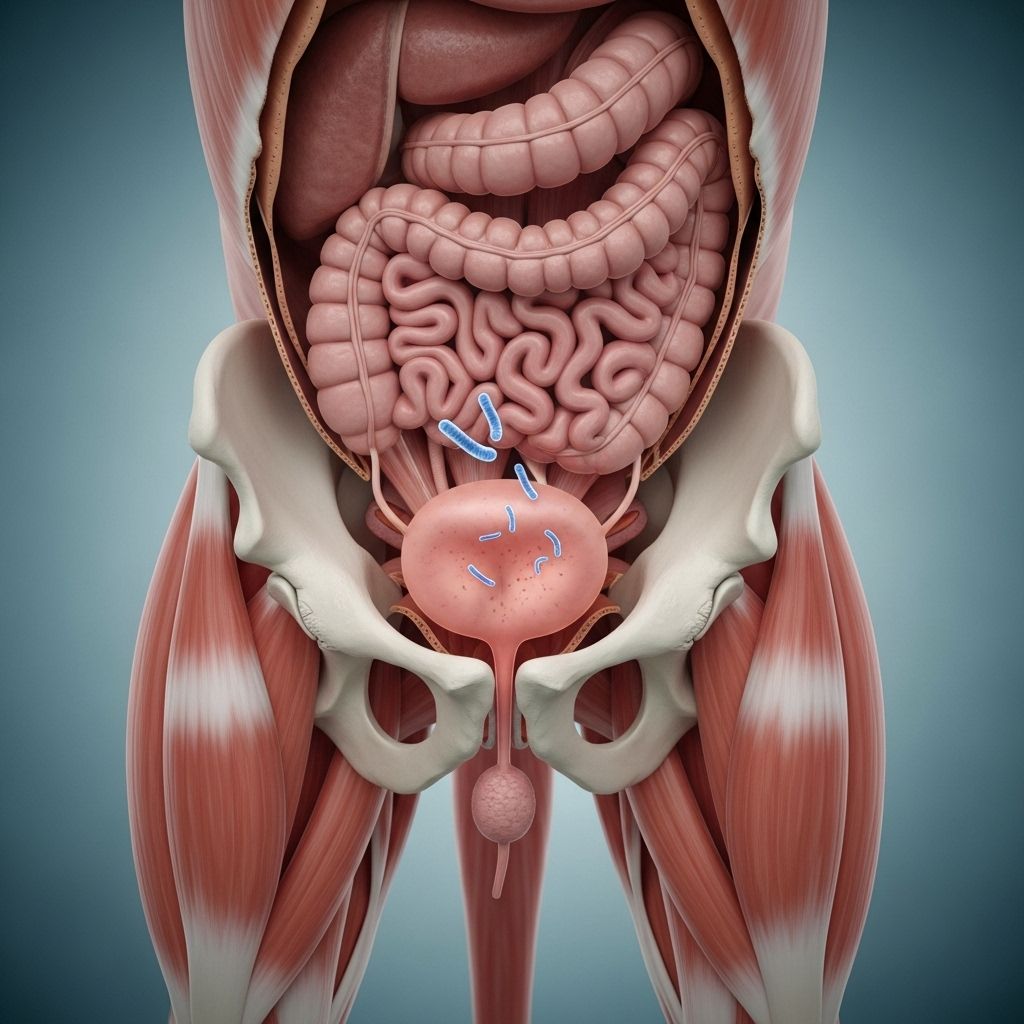Urinary Tract Infections in Dogs: Symptoms, Causes, Treatment, and Prevention
Guidance on canine bladder care for lasting comfort and infection-free days.

Image: HearthJunction Design Team
Urinary tract infections (UTIs) are common in dogs, and while they can cause discomfort and distress for pets and their owners, early recognition and treatment can prevent serious complications. This article provides a comprehensive overview of urinary tract infections in dogs, covering what UTIs are, common causes, typical symptoms, how veterinarians diagnose and treat the condition, and practical tips to help prevent UTIs in your dog.
What Is a Urinary Tract Infection (UTI)?
A urinary tract infection is an infection caused by bacteria that invade the urinary tract, which includes the kidneys, ureters, bladder, and urethra. In dogs, UTIs most commonly involve the bladder, a condition medically known as cystitis. The infection usually occurs when bacteria, typically originating from the skin or fecal matter, enter the urethra and travel upwards to infect the bladder.
Dogs have a tube called the urethra, through which urine exits the bladder and the body. Bacteria can infiltrate this passage and multiply, triggering an infection. The bacteria Escherichia coli (E. coli) is the predominant culprit in most canine urinary infections, but other bacteria can also be responsible.
Urinary tract infections affect about 14% of dogs, with a higher frequency in older dogs—especially those over seven years old. UTIs can appear as a one-time infection or recurrent episodes, particularly in dogs with underlying health or anatomical issues.
Common Causes of UTIs in Dogs
Several factors can contribute to the development of UTIs in dogs, including:
- Bacterial invasion: Bacteria from the skin or fecal matter entering the urethra.
- Weakened immune system: Illness or poor nutrition can reduce the dog’s ability to fight off bacteria.
- Underlying health conditions: Such as diabetes, bladder stones, kidney disease, prostate issues, bladder inflammation, and cancer.
- Spinal cord abnormalities: Which can impair normal urination and increase infection risk.
- Urinary tract obstructions or abnormalities: These can interfere with normal urine flow, promoting bacterial growth.
Recognizing Symptoms of Canine UTIs
UTIs cause distressing urinary symptoms that you might notice in your dog. Because dogs cannot communicate discomfort clearly, paying attention to these warning signs is crucial:
- Frequent urination: Your dog may try to urinate more often than usual but often passes little urine.
- Pain or discomfort when urinating: Whimpering, crying, or straining when urinating.
- Accidental urination: Dribbling urine or urinating in inappropriate places inside the house.
- Bloody or cloudy urine: Urine may appear pinkish or cloudy due to blood or pus.
- Licking the genital area: Excessive licking can indicate irritation or pain.
- Strong or unusual urine odor.
- General signs of illness: Such as lethargy, fever, appetite loss, or vomiting in more severe cases.
These symptoms warrant prompt veterinary assessment, as untreated UTIs can lead to complications affecting kidney health.
How Are UTIs Diagnosed in Dogs?
If you observe symptoms suggestive of a urinary tract infection, your veterinarian will perform a thorough examination and recommend tests to confirm the diagnosis. These typically include:
- Physical Examination: Checking the abdomen to palpate bladder size and tenderness.
- Urinalysis: A test of the dog’s urine to detect signs of infection such as bacteria, white blood cells, and blood.
- Urine Culture: To identify the specific bacteria causing the infection and determine the most effective antibiotics.
- Blood Tests: To evaluate kidney function and overall health, sometimes ordered if the infection is severe or recurring.
- Imaging Studies: Such as X-rays or ultrasound to detect bladder stones, tumors, or other abnormalities if indicated.
Treatment Options for Canine UTIs
The cornerstone of UTI treatment in dogs is antibiotic therapy, tailored based on the bacterial culture and sensitivity test results. Immediate and complete treatment is essential to fully eradicate the infection and prevent recurrence.
Typical treatment considerations include:
- Administer prescribed antibiotics diligently, completing the entire course even if symptoms improve early.
- Pain management with medications may be provided, as UTIs can cause significant discomfort.
- Increasing water intake to help flush bacteria from the urinary tract.
- Addressing underlying conditions such as bladder stones, diabetes, or prostate disease when present.
- Follow-up urinalysis is crucial to confirm the infection has resolved.
In complicated or chronic cases, treatment may require a longer course of antibiotics or additional interventions such as surgery for anatomical abnormalities or bladder stones.
Preventing Urinary Tract Infections in Dogs
Preventive measures help reduce the risk of UTIs, particularly for dogs prone to recurrent infections. Recommended strategies include:
- Ensure adequate hydration: Fresh water available at all times promotes frequent urination, which flushes bacteria.
- Encourage regular urination: Take your dog outside frequently, especially for female dogs who benefit from frequent emptying of the bladder.
- Maintain good hygiene: Regular grooming and cleaning of the perineal and genital areas.
- Feed a balanced diet: Supports immune health and urinary tract health.
- Prompt veterinary check-up: At the first sign of urinary discomfort to avoid more serious infections.
- Address underlying medical problems: Such as diabetes or bladder stones, which increase infection risk.
When to See a Veterinarian Immediately
Urgent veterinary attention is necessary if your dog:
- Is unable to urinate or is straining excessively without producing urine.
- Shows signs of severe pain or distress during urination.
- Has ongoing or recurrent infections despite treatment.
- Develops fever, vomiting, or lethargy.
These could indicate a serious urinary blockage or spreading infection that needs immediate intervention.
Frequently Asked Questions (FAQs)
Q: Can dogs get UTIs like humans?
A: Yes, dogs can develop urinary tract infections just like humans, primarily caused by bacteria entering their urinary tract.
Q: Are male or female dogs more prone to UTIs?
A: Female dogs are generally more susceptible to UTIs because of their shorter and wider urethra, which allows bacteria easier access to the bladder.
Q: How long does it take to cure a UTI in a dog?
A: With appropriate antibiotic treatment, many UTIs resolve within 7 to 14 days. However, treatment length can vary depending on the severity and if other health issues are present.
Q: Can UTIs be prevented in dogs?
A: Yes, ensuring good hydration, regular urination, hygiene, and prompt treatment of any health issues can minimize the risk of UTIs.
Q: Is a urine culture always necessary to diagnose a UTI?
A: While urinalysis is often the first diagnostic step, urine culture helps identify the exact bacteria causing the infection and is particularly important if the infection is recurrent or persistent.
Summary Table: Common Signs, Causes, and Treatments of UTIs in Dogs
| Aspect | Description |
|---|---|
| Common Causes | Bacterial infection (E.coli most common), weakened immunity, underlying health issues (diabetes, stones, prostate disease) |
| Symptoms | Frequent urination, painful urination, bloody/cloudy urine, licking genital area, inappropriate urination, lethargy |
| Diagnostic Methods | Physical exam, urinalysis, urine culture, blood tests, imaging (ultrasound, X-ray) |
| Treatment | Antibiotics, pain relief, increased water intake, treatment of underlying causes, follow-up testing |
| Prevention | Hydration, regular urination, hygiene, balanced diet, veterinary care |
Understanding and promptly addressing urinary tract infections can greatly improve the comfort and health of your dog. If your dog shows any signs of urinary discomfort, consult your veterinarian without delay to ensure proper diagnosis and treatment.
References
- https://www.akc.org/expert-advice/health/urinary-tract-infections-uti-in-dogs/
- https://vetster.com/en/wellness/a-pet-owner-s-guide-to-urinary-tract-infections-in-dogs
- https://www.webmd.com/pets/dogs/lower-urinary-tract-problems-infections-dogs
- https://www.smalldoorvet.com/learning-center/medical/utis-in-dogs
- https://www.petmd.com/dog/conditions/urinary/uti-dogs-signs-causes-and-when-call-your-vet
Read full bio of medha deb












